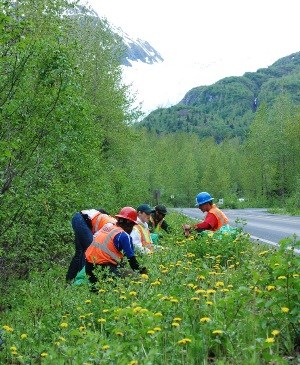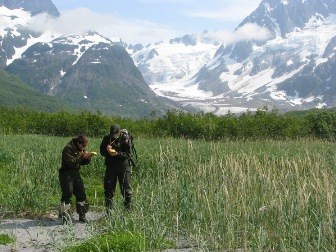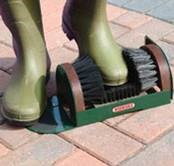
NPS Photo What is "invasive"? 
NPS Photo How do invasive plants cause problems? Invasive Plants in Kenai Fjords National Park Some of the invasive plants found in the park include: common dandelion (Taraxium officinale) pineappleweed (Matricarea discoidea) common plantain (Plantago major) white clover (Trifolium repens) sheep sorrel (Rumex acetosella) mouse-ear chickweed (Cerastium fontanum) common chickweed (Stellaria media) 
NPS Photo What You Can Do There is a special boot brush in front of the Nature Center at Exit Glacier. Before you go out on the trails, take a moment to brush off your boots. When hiking always stay on the designated trails and avoid disturbing the native vegetation. Disrupting fragile native vegetation opens up areas for invasive plants to invade. Helping to prevent the spread of invasive plants goes beyond your visit to Kenai Fjords National Park. Most invasive plants are introduced to parks gateway communities before they spread into a National Park. Therefore, it is important to avoid planting potentially invasive plants in your own garden. For more information, see the University of Fairbanks Cooperative Extension Service's guide for gardeners, "Don't Plant a Problem".
|
Last updated: April 14, 2015
